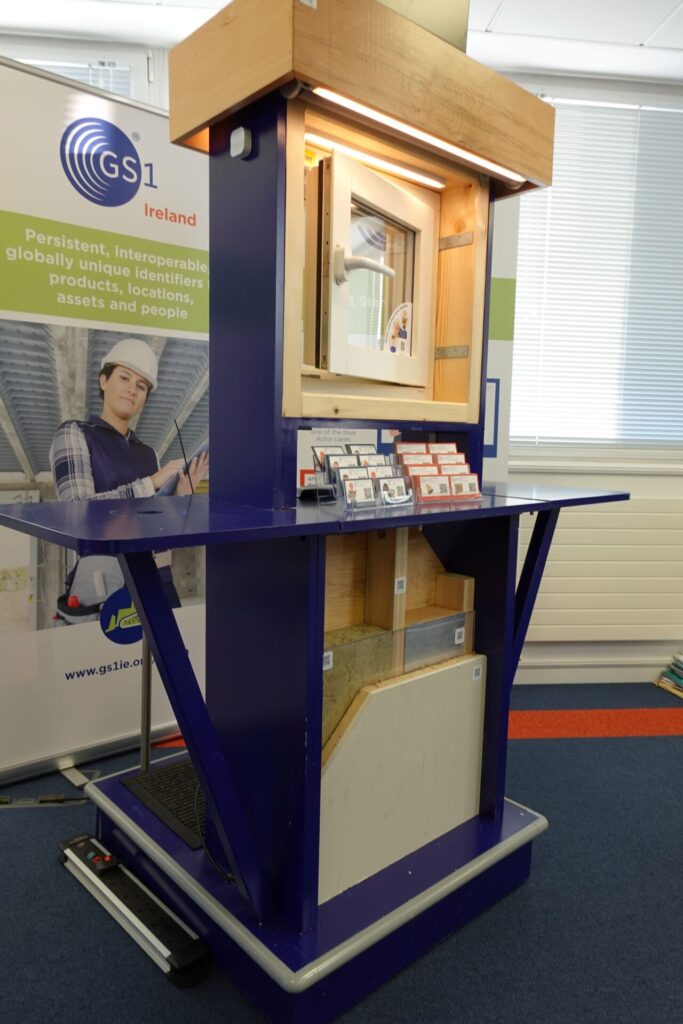The construction industry and allied manufacturing and retail sectors face significant challenges in becoming more efficient, increasing safety, improving productivity, and lowering costs. Legislation including the Construction Products Regulations and the allied introduction of Digital Product Passports (DPP) is fuelling a growing demand for consistent, accurate, and trusted data on the procurement and management of materials at every step of the supply chain.
The information must be detailed and correct, and be available throughout a project’s life cycle, from design to decommissioning. Products must have a unique common identifier that is understood by everyone and is interoperable, working across functions and systems over time.
GS1’s Global Trade Item Number or GTIN meets these requirements. The GTIN is a unique identifier for trade items, ensuring every product can be globally recognised. Other GS1 identifiers such as the GLN (Global Location Number) and GIAI (Global Individual Asset Identifier) can also be used to identify
locations and assets respectively.
By providing stakeholders with a common language for capturing and sharing data on buildings, equipment and materials, GS1 standards have the power to improve visibility, traceability, sustainability and safety.

GS1 Ireland have recently developed a Digital Link Demonstrator to showcase some potential use cases made possible by the adaption of GS1 standards. The Demonstrator is a physical replica of a section of a wall and window in a building. Products used in the demonstrator are identified using their GTIN and information on each of the products can be accessed via a QR code powered by GS1 Digital Link.
GS1 Digital Link is a method of encoding GS1 identifiers to enable the connection to online information. Use of the GS1 Digital Link standard means that identifiers such as the GTIN are now a gateway to useful information such as certifications, instructions for use, product information, traceability information and much more.
Using QR codes powered by GS1 means you’re providing a URL for people to scan, and you’re also providing GS1 identifiers. This means that the link can be used to access a number of different digital information sources depending on the use case.
For construction and engineering, a core strength of the GS1 Digital Link lies in its ability to create a seamless, auditable record of every interaction involving “Core Maintainable Assets.” Each human interaction, be it an installation, inspection, repair, or upgrade can be used to update the asset’s digital history. This ensures traceability, transparency, and accountability across the asset’s lifecycle.
With GS1’s open, interoperable standards, every action can be captured in a frictionless, efficient manner, providing a golden thread of data that is invaluable for compliance, sustainability reporting, and operational excellence.
For example, an architect could scan the QR code on a window to access the data sheet or digital product data from the manufacturer to ensure the window meets their requirements. The installer of the window could scan the same QR code to access handling instructions and health and safety information to install the window.
An occupant of a building could scan the QR code to report an issue with the window, such as a broken handle. A service engineer receives the report and can scan the same QR code to get information on which handle to use as a replacement, instructions on how to safely carry out the repairs, and can mark the job as complete, updating the service history of the window.
QR codes powered by GS1 can also be applied to retail products and will soon be widely adopted by the retail industry. This enriches the consumer experience by allowing them to connect to extensive amounts of product information, including usage and recycling instructions, while scanning at checkout like the traditional barcode. For construction and hardware products this information could include certifications, safety instructions, specifications, handling guidelines and installation manuals.
By adopting GS1 Standards and QR codes powered by GS1, the construction industry can bridge gaps in data management, ensure compliance with evolving regulations, and deliver safer, more sustainable projects. The GS1 Digital Link Demonstrator highlights a future where “one scan” unlocks endless possibilities, and every interaction is captured for perpetual value.
To learn more about how QR codes powered by GS1 can help you, or to experience their Digital Link Demonstrator for yourself, visit www.gs1ie.org/construction or contact Construction Engagement Consultant Dan O’Gorman at dan.ogorman@gs1ie.org.

This image illustrates the role of “Validated Product Data” (VPD) for the 20% of products that account
for 80% of the carbon content (Embodied and Operational) plus “Core Maintainable Assets” as well. These are critical metrics in meeting CSRD, CSDDD, and EUDR reporting requirements, particularly in driving OPEX efficiencies and GHG reductions under ESG initiatives. The illustration highlights how “Digital Product Passports” (DPPs), “Environmental Product Declarations” (EPDs), “Install & Operations Best Practices” and O&M manuals form a reliable Source of Validated Truth. Additionally, it identifies eighteen (18) actor roles that benefit from streamlined access to product and asset data via GTINs, GIAIs, and GLNs.





